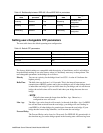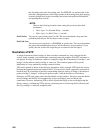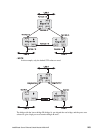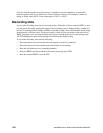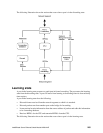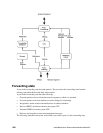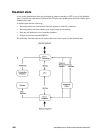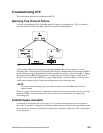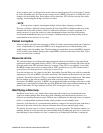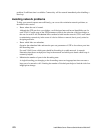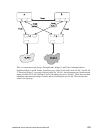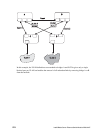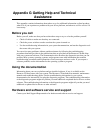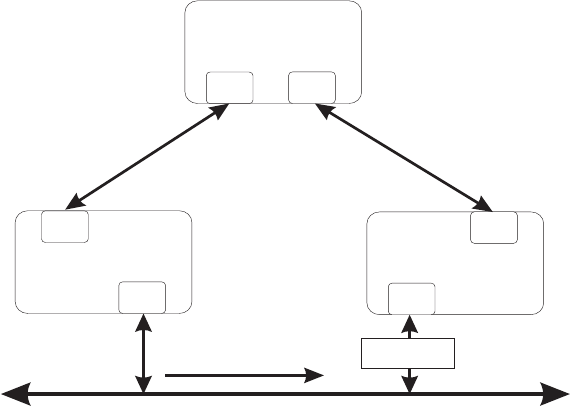
Intel® Blade Server Ethernet Switch Module IXM5414E 269
Troubleshooting STP
This section describes how to troubleshoot the STP.
Spanning Tree Protocol Failure
A failure in the Spanning Tree Algorithm generally results in a bridging loop. This is caused by a
port that should be in the discarding state but is instead forwarding packets.
In this example, B has been elected as the designated bridge and port 2 on bridge C is in the
discarding state. The election of B as the designated bridge is determined by the exchange of BPDUs
between bridges B and C. Bridge B had a better spanning tree priority vector than bridge C. Bridge
B continues sending BPDUs that advertise its superiority over the other bridges on this LAN. If
bridge C fails to receive these BPDUs for longer than the Max. Age time (default of 20 seconds), it
could start to change its port 2 from the discarding state to the forwarding state.
/ NOTE
To remain in the discarding state, a port must continue to receive BPDUs that advertise
superior paths.
There are several circumstances in which the algorithm can fail, mostly related to the loss of a large
number of BPDUs. These situations will cause a port in the discarding state to change to the
forwarding state.
Full/half duplex mismatch
A mismatch in the duplex state of two ports is a very common configuration error for a point-to-
point link. If one port is configured as full duplex and the other port is left in auto-negotiation mode,
the second port will end up in half-duplex because ports explicitly configured as half- or full-duplex
do not negotiate.
A
Root
B C
Blocked
Port 1
Port 1
Port 1
Port 1
Port 1
Port 1
Port 2
Port 2
Port 2
Port 2
Port 2
Port 2
BPDUs
Designated



